Going to rehab can be a life-saving choice. Still, it’s not always an easy choice to make when it feels like you’re plunging headfirst into the unknown. Knowing what to expect in treatment can offer some peace of mind during this tough transition. Here’s what a typical day in drug rehab will look like for someone in an inpatient, partial hospitalization, or outpatient program.
What do rehab centers do?
Drug rehab centers offer a controlled environment that’s optimized to help people struggling with substance abuse get better. They’re unique from a doctor’s office or other types of medical facilities in that rehabs are specially equipped to treat the psychological aspects of addiction as well as physical ailments. As such, their staff includes medical professionals such as doctors and nurses, and mental health professionals, usually in the form of a therapist or a counselor.
What do you do in rehab?
You can expect your treatment program to involve four main phases: detox, treatment, maintenance, and relapse prevention.
In the beginning, you’ll go through the detoxification process and medical assessments. Afterward, the emphasis of your treatment will shift to addressing the psychological concerns—identifying any mental illnesses (which could be an underlying cause or a result of addiction), uncovering your triggers, and deprogramming behaviors and patterns of thinking that promote continued drug abuse.
Everything you experience in rehab will ladder up to the final stage of relapse prevention. The goal is to ensure you have all the tools you need to maintain your sobriety once you leave the facility. For this, you’ll mostly be working with the therapist or counselor and possibly a peer-based support group, to identify why you turned to drugs in the first place and how you can move forward from it.
What to expect: A typical day in drug rehab
The exact day-to-day of one rehab may not be identical to another depending on whether they offer inpatient or outpatient care and if they specialize in a treatment approach such as outdoor immersion or music-based treatment. Those differences aside, virtually all treatment programs begin the same way and have similarities in the way the days are structured.
Planned routine
Soon after the initial intake process, you’ll meet with staff members to create a personalized treatment plan. If you’re in an inpatient program, you’ll have a daily schedule provided to you that includes treatment, meals, and leisure time. This may include:
- Individual therapy
- Group therapy
- Peer-based support group meetings (12 Step groups like Alcoholics Anonymous or Narcotics Anonymous)
- Alternative therapies such as art, music
- Group discussions
- Exercise
Fair warning to all night owls, the day’s scheduled activities can start pretty early in the day. Evening tends to allow for more free time and freedom in choosing recreational activities. You’ll also be expected to pitch in with chores like light housekeeping or yard work, or something smaller like making your bed in the morning.
Someone in a less intensive addiction treatment program such as partial hospitalization (PHP) or outpatient program or who is not residing onsite at the treatment facility, will only have meetings with their doctors or other staff members on a set schedule.
Limited communication to the outside world
During your stay (or time on site), you’ll have limited ability to interact with people outside of the facility. If you’re taking part in an inpatient program, the rehab may require you to turn in your electronic devices. This helps you focus on your treatment and also serves the double duty of preventing you from seeing people, places, or things that might tempt you to start using again. It may seem impossible to imagine your life without your phone by your side at all times, but the short-term discomfort is worth the long-term reward of a happy and healthier you.
Random drug testing
Many drug rehabs have a zero-tolerance policy regarding drug use. It’s not only counterproductive to your recovery but puts the others at the treatment facility at risk as well. As such, random drug testing is not an unusual practice.
Don’t let the unknown stop you
Change can be a good thing — a great thing! Especially when it comes to something as dire as drug use. We doubt anyone who’s gone rehab would tell you it’s easy, but they’ll certainly tell you it was worth it. The only question, then, is figuring out which rehab to go to.
There are over 14,000 addiction treatment centers (and counting) in the United States. Find the best drug rehab for you today in our comprehensive, state-based directory.

